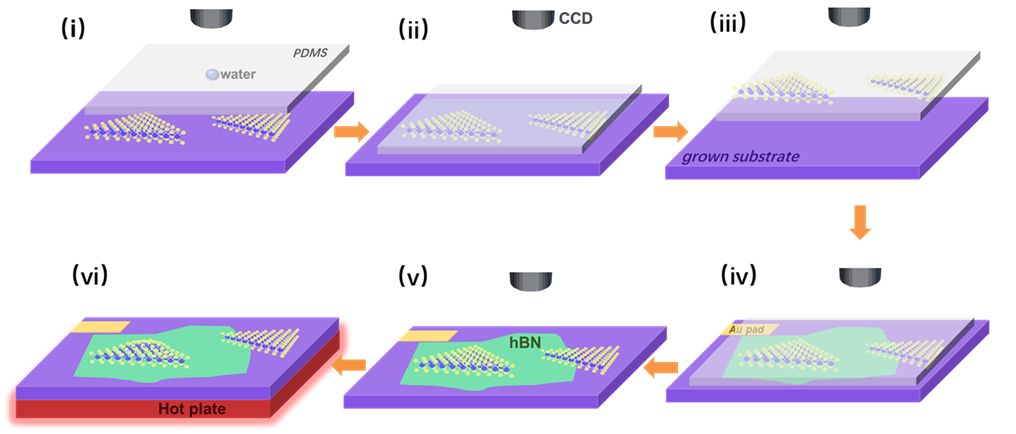Recently, the research team led by Prof. WANG Bin at National Center for Nanoscience and Technology (NCNST) of the Chinese Academy of Sciences reported that strain generated at bubbles of 2D materials could benefit the catalytic activity of hydrogen evolution reaction (HER). The study is published in Chem Catalysis.
Green hydrogen produced by electrochemical water splitting offers the potential to achieve carbon-neutral production processes. Catalysts play a crucial role in facilitating HER at the anode, making it a key component in the transition to a sustainable energy future. Transition metal dichalcogenides (TMDs), particularly MoS2, have garnered significant attention to replacing platinum-based materials. Usually, a series of strategies such as defect, doping, vacancy, and interface engineering have been implemented to improve the catalytic activity of the MoS2 basal plane for the HER.
However, so far the influence of out-of-plane microstructures (such as wrinkles or ripples, scrolls or folds, and bubbles) has often been overlooked, which commonly exist in 2D materials due to their flexibility. Therefore, the correlation between the active sites and the tested performance of catalysts is still questionable, especially considering the easy appearance of curved morphology in practical catalysts.
To remove these bottlenecks, the research team from NCNST led by Prof. Wang Bin, inspired by the bubbles that were fabricated via the top-down approach, realize the tailoring of bubbles with different ‘substrate-free’ curvature at the interfaces between monolayer MoS2 and hBN by a droplet-assisted transfer method. Finite element modeling (FEM) calculations demonstrate a gradual increase in strain distribution, moving from the bubble's periphery towards its center. Large bubbles can reach strain levels as high as 1.74%. According to density functional theory (DFT), these bubbles induce strain formation on MoS2, which enhances the adsorption of protons and HER kinetics. Consequently, there is a substantial boost in HER activity, with values reaching 129.65 mA cm-2 compared to 48.11 mA cm-2 at -0.4 V vs. reversible hydrogen electrode (RHE).
“Our team has discovered an innovative method for fabricating bubbles, enabling precise customization and providing insights into the profound influence of bubbles on strain distribution. Experimental findings reveal that the strain level associated with larger bubbles surpasses the typical lattice distortion-induced strains. We believe that this discovery holds significant implications for enhancing our comprehension of the intricate relationship between out-of-plane structures and the intrinsic material properties."says Wang Bin, a Professor at NCNST and the corresponding author of the current work.
Besides the experimental demonstration, theoretical studies found that the strain appeared in such out-of-plane structures could tune the electronic structure and thus adjust the proton adsorption performance of catalysts, which not only provides a more efficient and stable catalyst for hydrogen energy production but may also drive technological advances in other related fields.

Schematic image of a droplet-assisted transfer method. (Image by WANG Bin et al.)
Contact: WANG Bin
National Center for Nanoscience and Technology (NCNST)
E-mail: wangb@nanoctr.cn




